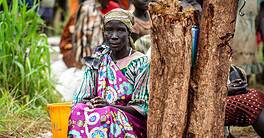Seeking to bounce back from a lost half-decade, Latin America still faces declining global demand and internal unrest in much of the region.

Massive protests in Chile, political upheaval in Bolivia and the inauguration of Argentina’s new left-of-center presidency rocked Latin America in the last months of 2019 and defied attempts to discern a clear political or economic direction for the region. Nor has the beginning of 2020 brought any brighter news. Like the rest of the world, Latin America faces the impact of coronavirus, its reverberations in the Chinese economy and persistent worldwide trade turbulence.
The region faces the threat of another lost decade, like the one it suffered in the 1980s, José Antonio Ocampo, a board member of the Bank of the Republic, Colombia’s central bank, and professor at Columbia University, warns in an article for Project Syndicate. Latin America’s GDP has grown only 0.4% in the last five years, a slower pace than during the worst period of the debt crisis, from 1980 to 1985.
Ocampo is not alone. Latin America’s economy should grow 1.6% in 2020, according to revised projections released in January by the IMF, 0.2% less than last October’s estimate. Optimistic analysts would say that is at least a slightly better than the 0.1% the region registered in 2019. But growth since 2014 has been the slowest in the last seven decades, according to the Economic Commission for Latin America and the Caribbean (Eclac).
While external headwinds are the prime culprit, domestic and regional factors have reduced the region’s productivity and investment capacity and contributed to deindustrialization, some economists say. Just growing is not enough for South Americans to benefit from the economy; what matters is how they grow, says Daniel Titelman, chief economist at ECLAC. “This does not mean that the governments should not be worried about the medium-term debt situation.”
Faced with widespread social fragility, governments need to review their budgetary priorities, bolster social projects and work to improve national consumption rates. Chile, which started to move from a neoliberal policy stance to a more socially sensitive approach less than a month after mass protests began, could be a model for the region if its neighbors wish to avoid unrest that could jeopardize the political order. Chile’s GDP was expected to grow 2.3% this year, but now only a 1% expansion will take place, according to Eclac.
New investment targets are emerging in the region in sectors like sanitary, water and sewage and other infrastructure; credit for small and medium-sized companies and consumers; housing and information technology. These industries may never overshadow Latin America’s perennials: food and mineral production, tourism, energy, telecommunications, infrastructure and some manufacturing, and their future will depend heavily on government reform efforts.
Brazil: Fiscal Adjustment and New Opportunities
Brazil’s economic prospects are unfolding more favorably than was expected last year. Improvement in the manufacturing sector in the third quarter and higher investment in infrastructure and machinery are sustaining the official estimate of 2% growth in 2020, which was seen to be at risk following poor results in the fourth quarter. However, the coronavirus epidemic is expected to cut 0.4% from the growth rate this year while political roadblocks in the way of approval of tax and administrative reforms may further temper the economy’s prospects.
On the plus side, the approval of the pension reform package last November was not followed by major protests. Investors will keep an eye on consumption during 2020, but also on three mega-business opportunities: the privatization of Eletrobras, the country’s state energy distribution company; the auction of 5G telecom; and infrastructure projects that will be driven by the new Water and Sewage Law, approved last December.
Pension reform is not enough to reduce the spending ceiling, says Otaviano Canuto, principal of the Center for Macroeconomics and Development. “Brazil needs the administrative and tax reforms, but the government makes a lot of noise and does not help the process in Congress during local elections.”
Argentina: Another Year Of Recession
The newly elected government faces two strong but clashing sets of imperatives: renegotiation of Argentina’s $ 337.3 billion public debt, $57 billion of it owed to the International Monetary Fund, and the adoption of relief measures for the poorest people affected by four years of fiscal adjustment. The government of Peronist President Albert Fernández enters what’s expected to be a third year in recession in 2020 with Indec projecting a -1.5% growth in GDP.
“We need to grow to pay the debt,” Fernández declared at his inauguration in December, prior to a journey abroad to gather support from European and US leaders for his talks with the IMF. The fund itself has offered some encouragement. “The first measures make us see that the government is moving in the right direction,” says Alejandro Werner, director of the Western Hemisphere Department at the IMF. “It announced important measures which have as their objective to protect the most vulnerable.”
México: Migrant Woes Continue
México walks a tightrope, still facing U.S. threats to impose sanctions on its exports in response to the influx of undocumented immigrants from Central America. The leftist government of President Andrés Manuel López Obrador is also hurt by the global economic slowdown. But approval of the new free-trade agreement replacing NAFTA by the US Congress has eliminated at least one major worry. The IMF projects 1.02% growth in 2020, an improvement over zero growth last year, but México is still plagued by concerns about López Obrador’s economic management.
Colombia and Peru: Faster Growth, More Investment
Colombia and Peru are enjoying faster growth, and in a better economic environment. Thanks to strong domestic demand, Colombia is expected to expand by 3.25% in 2020. Aside from mineral commodities, the country is attracting investment in other sectors related to improving conditions for its population, including education and the water and sewer infrastructure, construction and tourism.
“Among the region’s big economies, Colombia is the one that grows the most in a context of huge macroeconomic instability,” says the IMF’s Werner. Peru, facing less political instability than last year, is estimated to see 3.2% growth this year, its inflation rate well anchored within the Central Bank of Peru’s target rage, according to the IMF.
Central America: Growth Expected (Mostly)
Central America, including the Dominican Republic, is expected to grow 3.9% in GDP this year. Only Nicaragua, under leftist President Daniel Ortega, is expected to remain in recession, with negative 1.4% growth projected for 2020. Panama, which enjoyed a construction boom and is attracting foreign financial investment, is now expecting a new bounty from the Cobre Panama copper mine, which began producing late 2019.
Guatemala, Honduras and El Salvador, too, anticipate growth in 2020, although with no substantial progress on their social and domestic security agendas, based on the persistent migrants’ caravans from these countries to the US border with Mexico.



